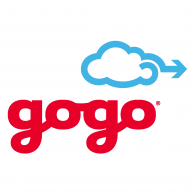For as long as CDNs have been around, they have all used the term “performance” to describe the quality of their network and the services they offer. But to date, most, if any have never backed up those terms with guarantees and any real methodology behind them. On Tuesday, Limelight announced the most aggressive video CDN promo I’ve ever seen, tied to something tangible. They are offering a money-back guarantee that they can reduce online video re-buffer rates for new customers by 10% or more and they will match customers’ existing delivery pricing. While their promo page doesn’t go into detail about the acceptable sources of rebuffer rates, people I’ve spoken to within the company tell me that they will accept customer and third-party sources. That’s a pretty bold move, and considering they aren’t insisting on using their own internal measurements and are accepting third-party sources, it seems like a pretty meaningful guarantee.
In a discussion with Limelight about the underlying change in their network that allows them to be able to offer a guarantee like this, the company said their ability to lower video rebuffer rates is a result of extensive in-house software, server, and network engineering efforts focused on optimizing the delivery of video. That by itself is a pretty broad statement, but digging deeper, they said it came down to three key elements of change; major improvements in the request and content-handling efficiency of their CDN; development of a purpose-built operating system; and a reduction of network and server “hot spots”
Limelight said when it comes to the OS of their network, their EdgePrism operating system is “designed specifically for delivering video, file downloads and web content, continually monitoring a user’s connection and optimizing how content is delivered based upon real-time analysis“. That’s not a ton of detail, CDNs are generally tight-lipped about specifics, yet it is impressive that a company Limelight’s size would tackle OS development. Regarding hot-spot reduction, Limelight explained that they have developed and deployed software to reduce the probability of bottlenecks occurring – and the impact of them if they do – from transit and peering links down to SSDs.
In the past year, Limelight said they have increased the efficiency of their network and caching software by more than 600%, but at the time they didn’t tout the positive impact to performance or video quality. For all the talk by CDNs and others in the streaming media industry around “quality” and “performance” of video delivery, it great to see that we’re finally starting to see a move towards actually measuring what performance means. And if more CDNs take Limelight’s approach and put actual numbers and guarantees behind their words, customers will get a better experience, content owners will provide a better user-experience and CDNs should be able to have a way to distinguish themselves from competitors, when it comes the very commoditized media delivery.
Note: Limelight provided me with customer-supplied data on % re-buffer-affected sessions for Limelight vs. a leading CDN over a 30 day period for a very large US video streaming company in North America, in addition to other data they shared. I can’t disclose that data since it comes from customers, but I have seen results from real customers, as measured by the customer directly.
 The worst way to find out that viewers aren’t having a good experience is via angry support emails or Twitter. If you have the right data at hand, getting out in front of problems your viewers might be seeing is crucial to keeping viewers happy and watching. At the Streaming Media East show in NYC, taking place May 16-17, we have a panel that will dig into real-world examples and approaches to collecting, utilizing, and making QoE data actionable in order to improve the viewer experience. Confirmed speakers include:Moderator:
The worst way to find out that viewers aren’t having a good experience is via angry support emails or Twitter. If you have the right data at hand, getting out in front of problems your viewers might be seeing is crucial to keeping viewers happy and watching. At the Streaming Media East show in NYC, taking place May 16-17, we have a panel that will dig into real-world examples and approaches to collecting, utilizing, and making QoE data actionable in order to improve the viewer experience. Confirmed speakers include:Moderator:




